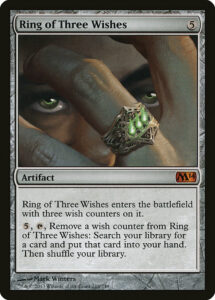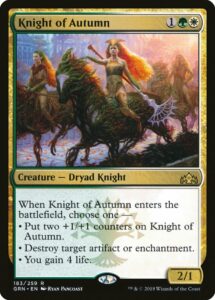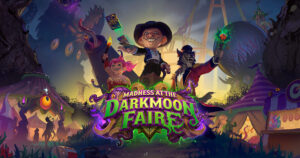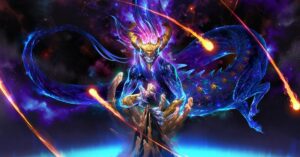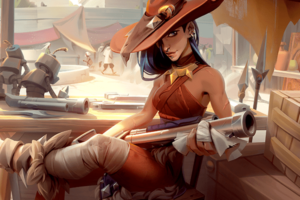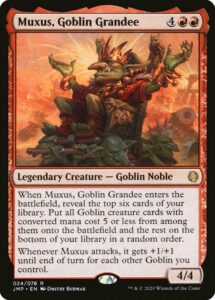Most digital card games feature best of one, where you play a single game to determine a winner. From a mass market perspective, this makes a lot of sense—it’s a selling point for your mobile-friendly strategy card game to have games last 5-15 minutes, rather than the 30-60 minutes of a sideboarded best of three match of Magic: the Gathering, or the 60+ minutes a game of Commander often requires. This is, admittedly, an unfair comparison for Magic, since the most popular method of play—”cards I own”—also tends to be best of one.
Why and Where Best of Three Works
Videogame players have no freedom in a game client to change the rules on the fly, so companies design for how the majority of their players prefer to play (which tends to skew towards shorter matches). This is why ladder play on Magic Arena is primarily best of one, why open tournaments offer both best of one and best of three, and why the highest levels of competition buck the trend and feature best of three almost exclusively.
Magic continues to feature best of three at the highest levels of competition because the sideboarding it affords adds flexibility to tournament play. (It also mitigates play skill variance, but that’s a story for another article.) Players can arm themselves with tools to engage a variety of opposing decks without jamming all answers into their deck and hoping to draw the right pieces. But in best of one, there might be too many different kinds of decks requiring too many differing kinds of answers. You have to pick and choose which decks you’re simply going to lose to, or whether to drastically contort your deck to avoid losing to a specific deck—Nexus of Fate managed to so warp sideboard-less Magic that it is the only card ever banned from best of one but not best of three.
However, these issues to best of one are nothing new. Major digital CCGs like Hearthstone have been around for the better part of a decade and plenty of games have thrown their hats into the ring. Today, we’re going to look at Magic and three other games, Hearthstone, Eternal, and Legends of Runeterra, to see their approaches to keeping best of one fresh.
Magic: Maximize Flexibility
Leading into the first Mythic Invitational at PAX East 2019, the first huge best of one Magic tournament, Magic began printing more cards well-suited for best of one play. Knight of Autumn was the first big example, combining Reclamation Sage and a mediocre Lone Missionary with the fail case of a Viashino Outrider. Sure, none of the individual modes were good, but that’s a lot of flexibility in a three-mana creature.
Magic continued this trend by adding flexibility to already good cards. Teferi, Time Raveler doesn’t just Repulse creatures, he also incidentally makes it foolish to play artifacts and enchantments like Search for Azcanta and The Great Henge. Oko, Thief of Crowns made it silly to try and play big artifacts or even big creatures. The noble goal of balancing the game for best of one ended up constricting the metagame around powerful cards whose flexibility invalidated whole swaths of cards.
The Mythic Invitational at PAX East 2019 saw another problematic solution to best of one: wishboards. Cards like Burning Wish and Cunning Wish have long given competitive players some access to their sideboard during gameplay. At PAX East, no one had sideboards—except all the Esper Control players packing 15-card wishboards thanks to the otherwise weak Mastermind’s Acquisition. Later that year, Fae of Wishes was printed and gave the year’s three huge mana engines enormous flexibility with their wishboards. One by one, Fires of Invention, Wilderness Reclamation, and Lucky Clover were all banned.
At present, Magic seems content with keeping its biggest tournaments best of three. Sure, there’s weirdness to how different ladder play and tournament play can be, but tournament play and casual play have always different. Moreover, Magic is a digital game and a paper game. Any solutions for digital play have to be implementable for both (unless/until Arena and paper continue to diverge). But what about those all-digital games?
Hearthstone: Discover the Answers
In 2017, Hearthstone introduced one of the most fun mechanics I’ve ever seen: Discover. If you “discover a spell,” the game shows you three different random spells. You choose one and add it to your hand. That’s it.
Discover is a delightfully chaotic, powerful, and ultimately simple mechanic. It does something only possible in digital and lets you play a little bit of Momir Basic. Legendary cards, the most expensive Hearthstone cards, can be discovered the same as any other, which creates a democratizing effect where you can play the best cards without having to buy them. Discover distills the excitement of opening a booster pack and sprinkles a little bit into every game. It is so successful a mechanic that it’s been emulated by both Eternal and Legends of Runeterra.
For tournament play, Discover takes the place of a sideboard. You don’t have all the answers you need, but that’s fine—bring the right kinds of Discover cards and you can probably find what you need to deal with most situations. The problem is that if Discover becomes too prevalent and potent, players have overly reliable access to answers. Gameplay naturally slows down if everyone can shift into a control deck, so designers compensate by creating increasingly strong aggressive options and long game finishers. Now, I’m a far, far worse Hearthstone player than I am a Magic player and less aware of the tournament scene; but Demon Hunter (Hearthstone’s newest class and generally best aggro deck) just got another slew of nerfs and as Saffron Olive aptly said, many Hearthstone finishers look like Muxus, Goblin Grandee.
Discover is a fascinating mechanic. It’s immediately obvious that it’s good and how exciting it is, yet it also has a high skill ceiling (since the best players will know every thing they could possibly get off of every Discover card and plan accordingly). But its extreme flexibility invites its own problems.
Legends of Runeterra: Invoke Threats
The newest game on our list is Legends of Runeterra. It released this year and its most recent (third) set introduced Invoke, a twist on Discover. Whereas Discover draws primarily from large, ambiguous pools of cards (like all spells or Rush minions available to your class), Invoke uses a curated list. When you Invoke, instead of looking at all cards you could have put in your deck, you instead select one of three cards from among the 22 Celestial cards. These Celestial cards are uncollectable and can only ever be obtained by Invoking them.
There are clear tradeoffs with this approach. It loses Hearthstone’s whimsy where you create ludicrous scenarios by drawing from massive card pools. But the more measured approach of this small possiblity space makes it far less likely than the game will break under the weight of hyper-flexible answers. It also allows Invoke to generate stronger cards, since the curated pool of non-collectible cards can be buffed to compensate for the hoop you jumped through to acquire them. You simply can’t do that when drawing from a pool of collectible cards.
The question with Invoke is whether its smart game design translates into better play experiences. I honestly don’t know—I’ve been really enjoying Legends of Runeterra, but I’ve only been playing for a week and it only came out this year.
Eternal: Wishboards, Wishboards, Wishboards
Eternal is the outlier of these four. While I’ve played plenty of Arena and Hearthstone this year and a ton of Legends of Runeterra this past week; Eternal I haven’t touched since early in the year and my impressions are the least recent. I chalk much of that up to Eternal’s solution to best of one: the Market.
Eternal’s fourth set introduced The Market in 2018, an optional five card sideboard, which certain cards would let you access, usually by swapping a card in hand for an appropriate card in your Market. In theory, Markets gave players access to a variety of flexible tools to help them adapt to different matchups. In practice, it gave players access to incredible consistency, where you could effectively break the four-copy limit by putting your fourth copy of a card in your Market and having 8+ cards to fetch it. Eternal tweaked the mechanic several times before issuing major changes to it early this year.
My big issue isn’t that the Market exists—the Market provides a unique take on card flow and has all sorts of wonderful game design affordances. Rather, I argue that the Market is so drastic a change that Eternal effectively became a different game in its wake. There’s something substantively different between a set introducing mechanics for players to engage with, and one new mechanic forever changing the way that every deck must be constructed. We saw Magic dabble in this with Companions; they overran every competitive Constructed format (aside from Pauper) until an unprecedented nerf laid low the massive design mistake. Then again, the advent of Planeswalker cards also drastically changed the game, though not to the extreme of demanding their inclusion in every deck.
Eternal is a really smart, and really fun game. Its first two sets were brilliant and then life swung me back to focusing on Magic. I know I’m coming across most harshly on it, but the lesson I take isn’t that Eternal made the wrong choices. Rather, there’s risk in changing too much to solve the problems of best of one after your game is out. You might find a great solution, but it could turn the game into something its audience no longer wants.
Four games, four different approaches to the same problem. There’s tons more ground to cover, but hopefully this is a helpful overview of the issues they all face.
As Magic looks to a future where digital card games remain big and tabletop Magic returns to the world, it will continue to question what the best way ahead forward is. Perhaps its tried and true course of best of three matches with sideboards really just is the best option for competitive play. Or perhaps Magic Arena spins off into a game of its own and can start Discovering cards of its own, either in a Shandalar-esque side mode or even in tournament play. Time will tell.
And, as always, thanks for reading.
Zachary Barash is a New York City-based game designer and the commissioner of Team Draft League. He designs for Kingdom Death: Monster, has a Game Design MFA from the NYU Game Center, and does freelance game design. When the stars align, he streams Magic (but the stars align way less often than he’d like).

